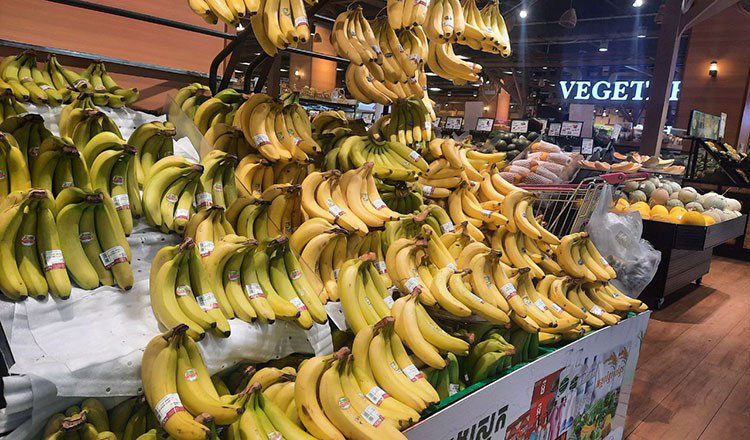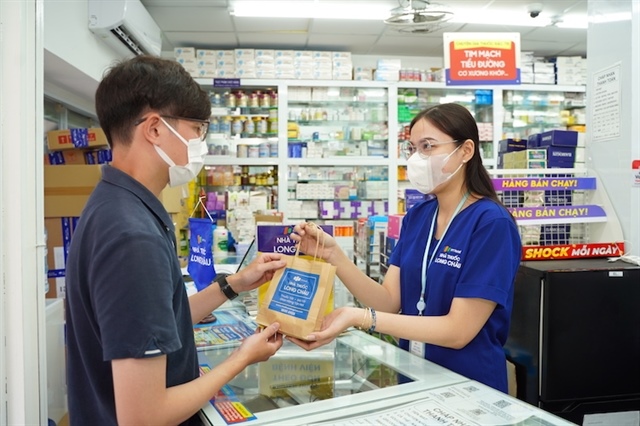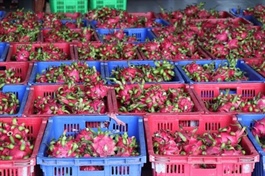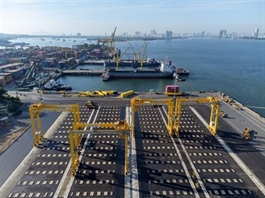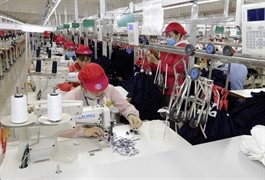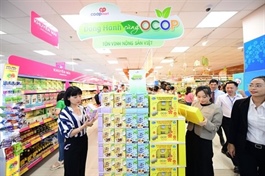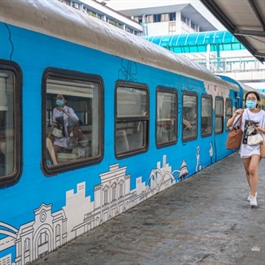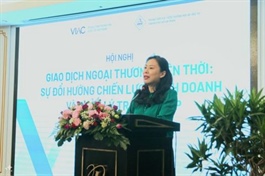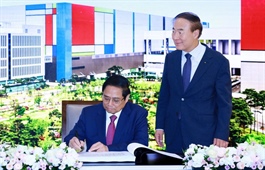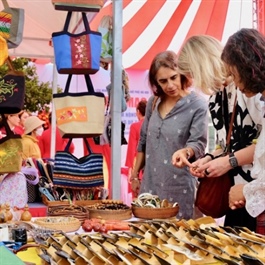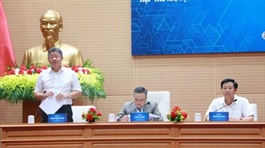Hanoi aims to turn aquaculture into a major industry
Hanoi aims to turn aquaculture into a major industry
Hanoi has a favorable potential for aquaculture, with a total water surface area of up to 30,800 hectares, of which about 24,200 hectares are used for fish farming.
Hanoi aims to turn the aquaculture sector into an important large-scale economic engine, with high-quality products, reliable brands and the capacity to meet the city's demand for freshwater aquatic food, with an eye on export.
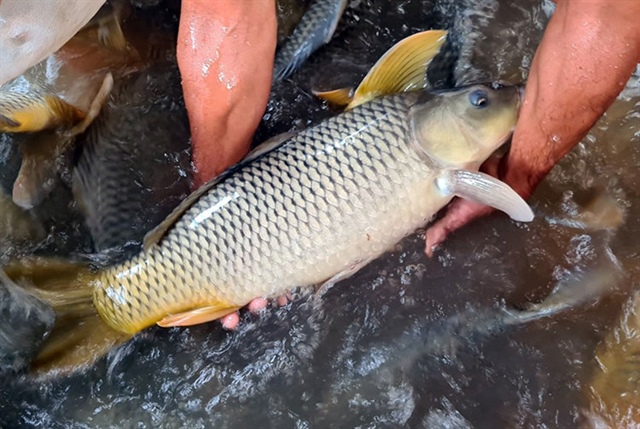
The VietGAP aquaculture model is being expanded across the city. Photo: thuysanvietnam.com.vn |
The city has now established a number of concentrated aquaculture zones in districts such as Ung Hoa, My Duc, Chuong My, Phu Xuyen, Ba Vi, Thanh Oai, Thuong Tin and Thanh Tri, where high-tech intensive farming techniques are used to produce high-value commodities. In total, about 26,800 tons of aquatic products were produced in the first quarter of 2023, an increase of 4.3% over the previous year.
In Thu Phu Commune, Thuong Tin District, the Nguyen Dinh Vien family has 11 hectares of VietGAP standard aquaculture farms. Because their farms are close to the Red River, they have the advantage of being able to quickly change the water to maintain a clean pond environment, which helps the fish grow quickly and prevent disease.
"Thanks to the application of high technology in aquaculture, our productivity is twice as high as normal farming, allowing my family to earn hundreds of thousands of US dollars a year," said Vien.
Thuong Tin is one of many other districts in the city that are using high technology in aquaculture, which brings high economic efficiency. The Nguyen Van Dung family in Ngu Hiep Commune, Thanh Tri District, said their family has eight hectares of ponds, mainly for breeding traditional fish.
The key to Dung's success, he says, is the use of rice bran and maize to feed the fish, with absolutely no industrial feed or antibiotics. Proactive disease prevention for the fish is a priority and the stocking density is moderate. With a yield of 25 tons per harvest and an average price of over VND30 million ($1,178) per ton, he makes a net profit of over VND300 million ($11,778) per year.
Local insiders commented that although the city has advantages in terms of water resources, aquaculture has not developed proportionately. The water sources for aquaculture come mainly from large rivers, most of which are polluted.
Meanwhile, the price of aquaculture feed has soared, while aquafood has become harder to sell. The lack of investment in infrastructure in places where aquaculture is concentrated makes it difficult to implement advanced technology in production.
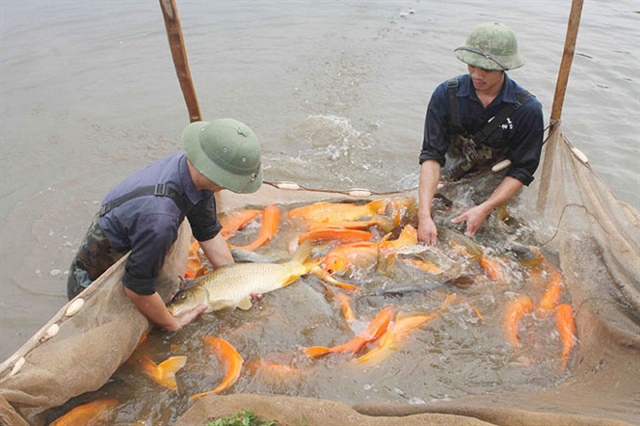
Hanoi continues to apply science and technology to improve aquaculture productivity. Photo: Hanoimoi Newspaper |
Nguyen Dinh Dang, head of the Hanoi Sub-Department of Animal Husbandry, Fisheries and Veterinary Medicine under the Hanoi Department of Agriculture and Rural Development, said the city has 25,800 households engaged in aquaculture, but most are small-scale and fragmented.
"Because of their low economic value, aquatic products are mainly consumed locally, he said, adding that people's ability to ensure food safety and engage in intensive and semi-intensive aquaculture is still constrained.
According to Tu Duc Manh, Head of the Thuong Tin District's Economic Division, "We continue to encourage farmers to apply science and technology in aquacultures, such as pond-in-pond technology, biofloc, and intensive farming of common carp, grass carp, and tilapia, in order to address the challenges faced by aquafarms."
He added that the district has helped farmers adopt VietGAP-compliant aquaculture models, as well as set up supply chains to boost sales through modern distribution channels.
Nguyen Thi Tuyet Anh, Head of Thanh Tri District's Economic Division, said the district works with Hanoi's Sub-Department of Animal Husbandry, Fisheries and Veterinary Medicine to organize annual training sessions for local farmers. They regularly collect water samples to assess the environmental quality of growing areas, provide guidance on care procedures, and advise on disease prevention and pond management practices to ensure food safety and biosecurity.
She added that the district has worked with local radio stations to disseminate information about disease outbreaks, aquaculture practices, and ways to protect livestock and aquatic animals from extreme heat and cold.
According to Nguyen Manh Phuong, Deputy Director of the Hanoi Department of Agriculture and Rural Development, training has been provided on broodstock management, feed, environmental treatment products, and environmental monitoring and warning systems for aquaculture.
He also said that the department intends to improve the way the aquaculture industry is managed by the state, strengthen ties with neighboring cities and provinces to facilitate the distribution of products, evaluate and develop aquaculture in low-yield rice fields by promoting integrated fish farming or specialized fish farming in areas prone to flooding as part of the development plan, and provide financial support for environmental treatment in areas intensive in aquaculture.
|
The city's aquaculture development plan from now to 2030, with a vision to 2045, aims to reorganize production to increase the productivity, quality and added value of aquatic products. It calls for the establishment of industrial and high-tech aquaculture zones to produce large-scale commercial aquatic products. The goal is to reach 25,000 hectares of aquaculture area by 2030, including 10,000 hectares of concentrated aquaculture zones with an average yield of about 15 tons per hectare per year. The plan is designed to transform the capital's aquaculture industry into a major economic sector. The objectives are to develop water surfaces in urban and suburban areas of Hanoi to simultaneously boost the aquaculture economy, mitigate flooding, conserve water resources, and create an ideal living environment for the city's residents. Hanoi encourages the development of aquaculture programs and models that utilize advanced technologies, modern scientific techniques, and innovative practices - especially in environmental management and disease control using biological agents. The goal is to reduce production costs, promote environmentally friendly practices, and increase resilience to climate change. To increase product value and ensure sustainable development, the city supports organic, ecological aquaculture models and the adoption of Good Aquaculture Practice (GAP) standards. Mechanization models that help maintain and manage aquaculture and produce feed are also being promoted. Hanoi will invest in infrastructure for concentrated aquaculture zones, including river-based water supply systems, internal water circulation and drainage networks, transportation, and environmental treatment facilities. The city will also prioritize the development of high-quality aquaculture seed production systems, focusing on major farmed species as well as new species with high economic potential. |


